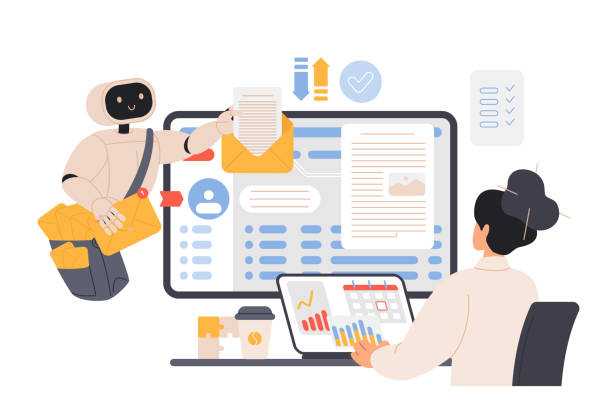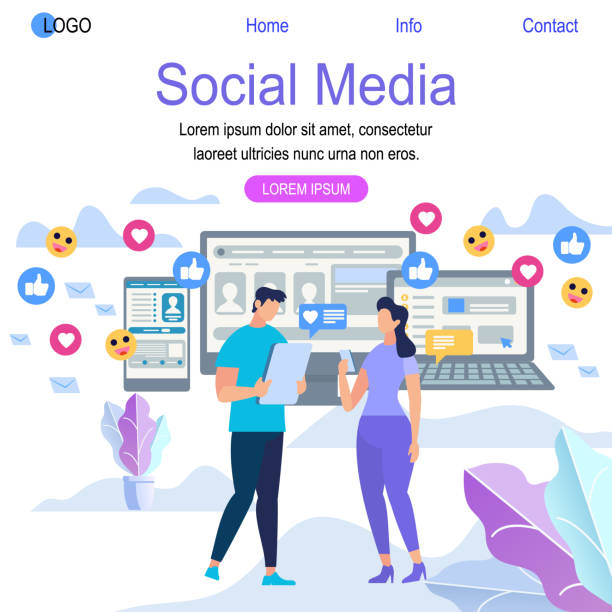The Importance of On-Page SEO for Success in the Digital World
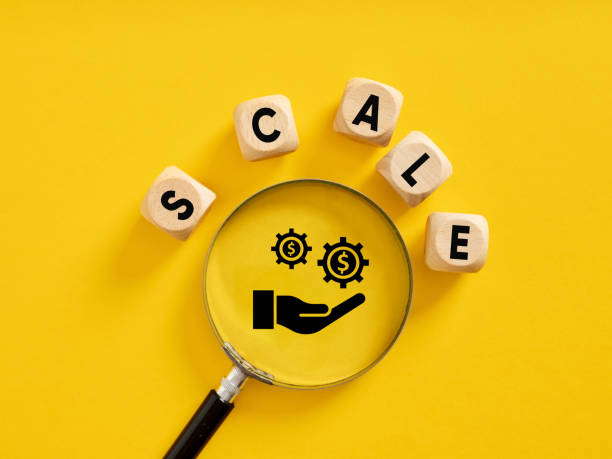
In today’s highly competitive world, a strong online presence is vital for any business.
One of the most important pillars of this presence is #Search_Engine_Optimization or #SEO.
Among various types of SEO, On-Page SEO plays a fundamental and essential role.
This part of optimization refers to all the actions you can directly apply to your website to improve its ranking in search results.
Unlike Off-Page SEO, which is mostly about link building from other websites, On-Page SEO is entirely under your control and forms the foundation of a successful SEO strategy.
In this section, we will provide you with a tutorial on how to convince search engines that your content is valuable and relevant by correctly applying the principles of On-Page SEO.
This includes optimizing titles, meta descriptions, URL structure, text content, images, and internal links.
A deep understanding of these concepts can be the difference between being seen and being ignored in the online space.
For any webmaster looking to increase organic traffic, focusing on strong On-Page SEO is an undeniable priority.
Without an optimized on-site infrastructure, even the best Off-Page SEO strategies cannot reach their full potential.
Does your current e-commerce website design not generate the sales you expect?
Rasaweb is an expert in professional e-commerce website design!
✅ An attractive and user-friendly website aimed at increasing sales
✅ High speed and security for an ideal shopping experience⚡ Get a free online store design consultation with Rasaweb!
The Role of Keywords in On-Page Optimization and Content Strategy
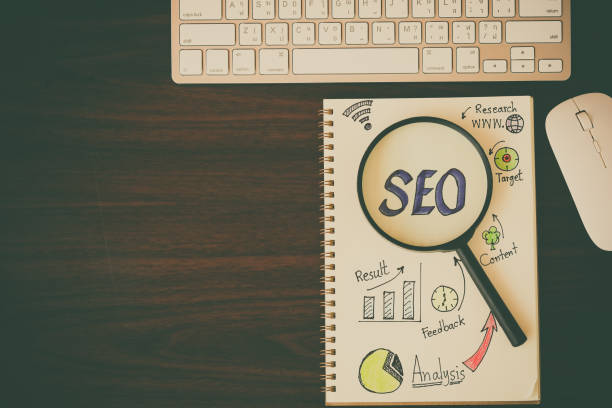
The correct selection and use of keywords are the cornerstone of any successful On-Page SEO strategy.
This process goes beyond simply inserting a few words into the text; it requires thorough research and a deep understanding of user intent.
To achieve effective on-page optimization, you must first identify the main keywords and long-tail keywords relevant to your website’s topic.
This helps you produce content that precisely answers your audience’s questions and needs.
Using keyword research tools like Google Keyword Planner, SEMrush, or Ahrefs can be very helpful in this regard.
After identification, the next step is to naturally integrate these words into your content.
This is the most specialized part of the work, as over-stuffing text with keywords (Keyword Stuffing) not only won’t help your SEO but can also lead to penalties from search engines.
Your content should be informative and valuable, and keywords should be placed logically and in the appropriate context.
Keywords should be present in the main title, subheadings, the first paragraph, and scattered throughout the text.
Also, using synonymous and related keywords (LSI Keywords) helps search engines better understand the main topic of your content and indicates the richness of your content.
This analytical approach ensures that each of your web pages is created with a specific purpose and has high potential for attracting organic traffic through On-Page SEO.
Optimizing Title and Meta Description for More Clicks
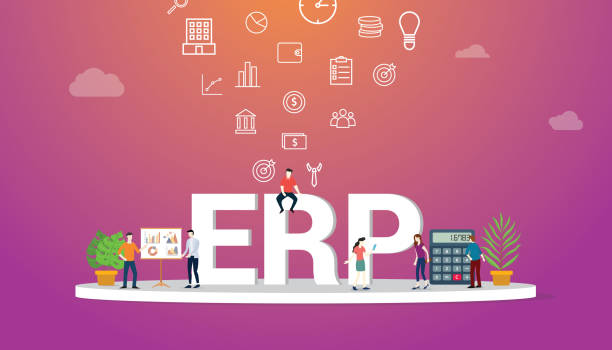
The title (Title Tag) and meta description are the first things users see in search results.
These two elements are not only important for search engines to understand your page’s content, but they also significantly impact user click-through rates (CTR).
In On-Page SEO, optimizing these elements is an art and a science.
Your page title should include the main keyword, be short and appealing, and entice users to click.
The ideal length for a title is about 50 to 60 characters.
Meta descriptions should also provide an engaging and descriptive summary of your page’s content and persuade users that by clicking, they will find exactly what they are looking for.
Although meta descriptions do not directly impact rankings, a high CTR can indirectly send positive signals to search engines.
Using keywords in meta descriptions is important, but more importantly, providing a Call to Action and highlighting your page’s unique value proposition.
The tutorial provided in this section emphasizes the importance of writing titles and meta descriptions that are optimized for both search engines and humans.
Remember that each page of your website should have its own unique title and meta description.
This is a specialized step in improving On-Page SEO and attracting targeted traffic.
| Element | Goal | On-Page SEO Optimization Tips |
|---|---|---|
| Title Tag (Page Title) | To determine the main topic of the page for search engines and users | Includes main keyword, short and attractive (50-60 characters), Unique for each page |
| Meta Description | An appealing summary of the content to encourage user clicks | Includes keyword, call to action, creative (150-160 characters), Unique for each page |
| Header Tags (H1-H6) | Structuring content and highlighting subheadings | H1 includes the main keyword, use of other Headings for organization, natural and hierarchical |
Content Quality and Structure in On-Page SEO

Content is king, and this statement holds true in On-Page SEO more than ever.
Regardless of technical optimizations, if your content lacks the necessary quality, you will hardly achieve a good ranking in search results.
Search engines, especially Google’s advanced algorithms, are increasingly focused on understanding user intent and providing the most relevant and comprehensive answers.
This means your content should be expert, comprehensive, accurate, and valuable.
Long and comprehensive content that addresses all aspects of a topic usually performs better.
In addition to quality, content structure is also very important in on-page optimization.
Using headings (H1 to H6) logically and hierarchically, short paragraphs, bulleted and numbered lists, and readable text helps users and search engines easily understand your content.
This is a key guidance for improving user experience, which itself is an important factor in SEO.
Also, adding multimedia content such as images, videos, and infographics can increase the attractiveness of your content and extend the user’s time on the page.
This analytical approach to content allows you not only to rank for your target keywords but also to establish yourself as a credible authority in your field, which directly impacts your On-Page SEO.
Did you know that 85% of customers check your company’s website before any interaction?
With Rasaweb, build a corporate website worthy of your reputation.
✅ Increase customer credibility and trust
✅ Attract high-quality leads
⚡ Get a free website design consultation
Optimizing Site Speed and Mobile Responsiveness
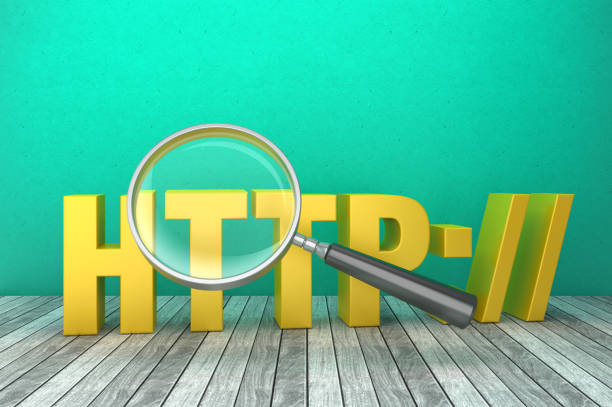
In the current era, website speed and its responsiveness on mobile devices are not only important factors in user experience (UX) but also directly impact your On-Page SEO.
Search engines like Google give higher scores to websites that load quickly and provide a good mobile user experience.
A tutorial in this area includes several basic steps.
To improve site speed, you can use methods such as image compression, browser caching, reducing the number of HTTP requests, optimizing codes (CSS, JavaScript, HTML), and using a CDN (Content Delivery Network).
Tools like Google PageSpeed Insights can help you identify your site’s weaknesses and find appropriate solutions.
Regarding mobile responsiveness, your website should be designed to display well without issues on any screen size, including smartphones and tablets.
This means automatic adjustment of layout and font sizes.
Responsive Design is the best guidance for achieving this goal.
Since a significant portion of searches today are conducted via mobile devices, neglecting this aspect can severely harm your On-Page SEO ranking.
This is a precise analysis of the importance of the technical aspects of On-Page SEO that cannot be overlooked.
Optimizing Images and Videos for SEO

Visual content, including images and videos, plays a vital role in your website’s attractiveness and interactivity.
But these elements must be properly optimized to help improve your On-Page SEO instead of slowing down the site.
A tutorial in this area involves several key steps.
First of all, compressing images without significant quality loss is essential to reduce file size and improve page loading speed.
New formats like WebP can dramatically reduce image sizes.
Another important point is the use of the Alt tag for images.
Alt Text (alternative text) provides a brief and accurate description of the image content and is displayed when the image fails to load.
Also, for search engines that cannot “see” images, this tag helps them understand the image’s topic.
Alt Text should include keywords relevant to the image and page and be descriptive and carefully written.
Naming image files is also important; use descriptive names that include keywords instead of generic names like “image001.jpg”.
For videos, ensure they have proper hosting (e.g., uploading to platforms like YouTube and then embedding it on the site) and also use a Video Sitemap so search engines can easily index your video content.
Optimizing these multimedia elements is a specialized and essential step in your On-Page SEO strategy that can significantly impact rankings and user experience.
The Importance of Internal Linking and Improving User Experience

Internal linking is one of the powerful and often overlooked tools in On-Page SEO.
This process involves creating links from one page on your website to another page within the same website.
Its primary goal is to help search engines understand your website’s structure and distribute link equity among different pages.
Furthermore, internal links help users easily navigate your website and access related information, which directly impacts user experience (UX).
When creating internal links, using descriptive and keyword-rich anchor texts is crucial.
This signals to search engines what the destination page is about.
For example, instead of “click here”, use “comprehensive guide to On-Page SEO”.
The specialized advice in this area is to give more links from other relevant pages to your more important pages to signal their importance to search engines.
Also, creating a logical and hierarchical internal linking structure helps search engines crawl and index all your pages.
Another practical tip is to place internal links within the main content of pages, not just in the footer or sidebar.
This indicates a semantic connection between the contents.
Internal linking can also increase user time on your site and reduce the bounce rate, both of which are positive signals for On-Page SEO.
| Strategy | Goal | Implementation Tips |
|---|---|---|
| Contextual Links in Content | Semantic connection between pages, distribution of link equity | Use descriptive and keyword-rich anchor texts, link to relevant and valuable pages |
| Hierarchical Structure (Silo) | Organizing content by main and sub-topics | Linking from main pages to sub-pages and vice versa to strengthen topical authority |
| Breadcrumbs | Improving user navigation and showing site structure to search engines | Use breadcrumbs to help users understand their location on the site |
Monitoring and Data Analysis in On-Page Optimization

After implementing On-Page SEO strategies, your work is not over.
In fact, a significant part of the optimization process is continuous monitoring and analysis of website performance.
This is a continuous analysis that helps you evaluate the effectiveness of your changes and discover new opportunities for improvement.
Tools like Google Analytics and Google Search Console are invaluable in this regard.
With Google Analytics, you can monitor website traffic, user behavior, bounce rate, time on page, and traffic sources.
This data provides important insights into how users interact with your content and can indicate which pages need improvement in On-Page SEO.
Google Search Console also provides vital information about your website’s performance in search results, including the keywords you rank for, crawling and indexing issues, and backlinks.
By reviewing the “Coverage” report in Search Console, you can ensure that all your important pages are correctly indexed by Google and identify and resolve technical issues such as 404 pages or server errors.
This precise monitoring allows you to stay informed about the latest changes in your site’s performance and quickly respond to challenges and opportunities.
Ultimately, a data-driven approach to On-Page SEO ensures that your efforts are effective and optimized.
Are your online sales not as expected? With Rasaweb, permanently solve the problem of low sales and poor user experience!
✅ Increase visitor-to-customer conversion rate
✅ Create an enjoyable user experience and increase customer trust
⚡ Act now to get a free consultation!
Common On-Page SEO Errors and How to Avoid Them
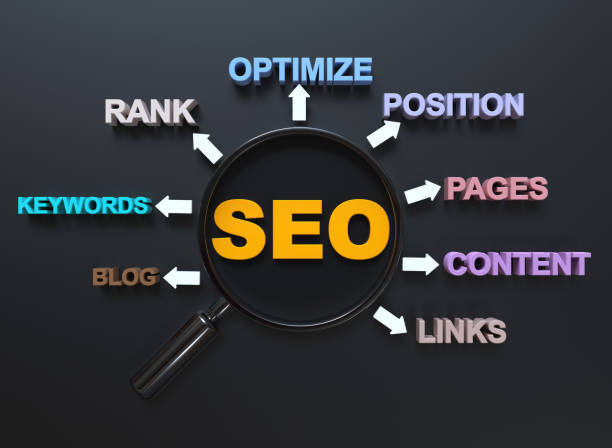
On the path to On-Page SEO, there are some common errors that can harm your efforts and prevent you from achieving your desired ranking.
Understanding these mistakes and being aware of the guidance on how to avoid them is an important part of a successful on-page optimization strategy.
One of the most common errors is “Keyword Stuffing” or overfilling text with keywords.
This practice is not only penalized by search engines but also severely degrades the user experience.
The focus should be on natural and logical use of keywords.
Another error is Duplicate Content.
If you have similar or identical content on different pages of your website, search engines might have trouble identifying the original version.
Using Canonical Tags or modifying content can solve this problem.
Ignoring site speed and lack of mobile responsiveness are also major mistakes, whose importance was mentioned in previous sections.
Furthermore, broken links and 404 pages also harm user experience and can reduce your site’s credibility with search engines.
Not optimizing images, not using Alt Text, and improper file naming are also mistakes that prevent full utilization of the site’s visual potential.
Finally, questionable or low-quality content can also nullify all your On-Page SEO efforts.
By regularly checking your website and using SEO audit tools, you can identify these errors and fix them before they harm your ranking.
Future Trends and Continuous On-Page SEO Optimization

The world of SEO is constantly changing, and what is effective today may become obsolete tomorrow.
Therefore, an analytical and adaptive approach to On-Page SEO is essential.
Future trends in On-Page SEO are increasingly moving towards a deeper understanding of user intent, voice search, visual search, and artificial intelligence.
Search engines are becoming smarter and can understand content conceptually, not just based on keywords.
This means that the specialization of content and comprehensive answering of all aspects of a query will be of high importance.
Optimizing for voice search requires focusing on long-tail and question-based keywords, as people search in this way in natural conversation.
Also, with the advancement of AI, the emphasis on E-E-A-T (Experience, Expertise, Authoritativeness, and Trustworthiness) will become even greater.
This means that your content should not only provide correct and complete information but also be written by someone with experience and expertise in that field.
The good news is that the fundamental principles of On-Page SEO, such as quality content, organized structure, site speed, and good user experience, will always remain stable.
Therefore, focusing on these principles and keeping up with the latest developments in Google’s algorithms through continuous analysis and monitoring is the key to sustained success in On-Page SEO.
No SEO strategy is a one-time effort; it requires continuous optimization and improvement.
Frequently Asked Questions
| Question | Answer |
|---|---|
| What is On-Page SEO? | On-Page SEO involves optimizing elements that are directly within your control and on your website. Its goal is to help search engines better understand the page content and improve its ranking. |
| Why is On-Page SEO important? | On-Page SEO provides clear signals to search engines about the page content, improves user experience, and increases the chances of attracting organic traffic. |
| What are the most important On-Page SEO factors? | Keywords, Title Tag, Meta Description, URL structure, quality content, image optimization, and internal links are among the most important factors. |
| What is the role of the Title Tag in On-Page SEO? | The title tag is one of the most important signals for search engines and users, defining the main topic of the page. It should include the main keyword and be appealing. |
| How important is the Meta Description? | Meta descriptions do not directly impact rankings, but by encouraging users to click, they can improve the click-through rate (CTR). |
| How to optimize images for On-Page SEO? | By using descriptive file names, appropriate Alt Text containing keywords, compression to reduce size, and correct dimensions. |
| What is the impact of Internal Links on SEO? | Internal links help search engines discover and index site pages, distribute authority (PageRank) throughout the site, and improve user navigation. |
| Is page loading speed an On-Page SEO factor? | Yes, page loading speed is a critical factor in On-Page SEO and user experience. Slower pages can lead to higher bounce rates and lower rankings. |
| What are the characteristics of quality content for On-Page SEO? | Quality content must be comprehensive, unique, relevant, trustworthy, readable, and fully answer users’ needs and questions. |
| How can keywords be used in content? | Keywords should be used naturally in titles, subheadings, the first paragraph, the body text, and image alt text. Avoid keyword stuffing. |
And other services of Rasaweb Advertising Agency in the field of advertising
Smart Google Ads: Professional optimization for campaign management using an SEO-centric content strategy.
Smart Link Building: A professional solution for digital branding with a focus on precise audience targeting.
Smart Data Analysis: An innovative platform for improving customer acquisition using real data.
Smart Sales Automation: Transform online growth with custom programming.
Smart Google Ads: A new service for increasing customer acquisition through the use of real data.
And over a hundred other services in the field of internet advertising, advertising consultation, and organizational solutions
Internet Advertising | Advertising Strategy | Advertorials
Sources
Comprehensive On-Page SEO GuideKeyword Research TutorialContent Optimization TipsWhat is Technical SEO?
? For a powerful presence in the digital world and sustainable growth of your business, Rasaweb Afarin Digital Marketing Agency is your reliable partner, offering services such as WordPress website design, SEO, and social media management.
📍 Tehran, Mirdamad Street, next to Bank Markazi, Southern Kazeroon Alley, Ramin Alley, No. 6

